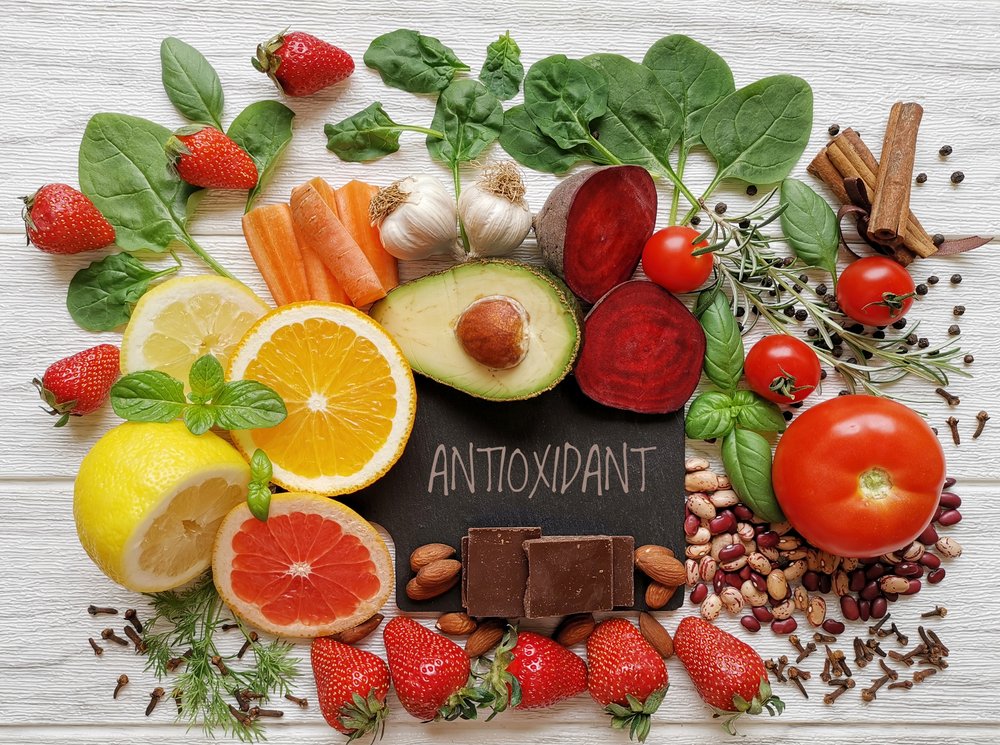 If you are skin care savvy, it's very likely you've heard of the term free radicals. Sure, they sound scary, but you may be wondering, “What exactly are they?” I am going to break down the science in skin care verbiage into an easy-to-understand lesson on all things skin science! Free radicals are essentially unstable oxygen atoms that rob electrons from the surface of our skin cells. They create another form of free radical called lipid peroxide and start a downward spiral of damage to the skin. Free radicals cause stress on the skin, damage collagen and eventually lead to the effects of aging. Free radicals can form from smoking, sun exposure, environmental exposures, chemical exposures and blue light! In fact, blue light, produced by electronic devices such as your phone, computer, or tablet, can penetrate the skin more deeply than UVA and UVB rays. Studies have shown blue light can accelerate aging, fine lines and wrinkles because it damages collagen and elastin more quickly.
If you are skin care savvy, it's very likely you've heard of the term free radicals. Sure, they sound scary, but you may be wondering, “What exactly are they?” I am going to break down the science in skin care verbiage into an easy-to-understand lesson on all things skin science! Free radicals are essentially unstable oxygen atoms that rob electrons from the surface of our skin cells. They create another form of free radical called lipid peroxide and start a downward spiral of damage to the skin. Free radicals cause stress on the skin, damage collagen and eventually lead to the effects of aging. Free radicals can form from smoking, sun exposure, environmental exposures, chemical exposures and blue light! In fact, blue light, produced by electronic devices such as your phone, computer, or tablet, can penetrate the skin more deeply than UVA and UVB rays. Studies have shown blue light can accelerate aging, fine lines and wrinkles because it damages collagen and elastin more quickly.
After that you may be thinking you should put down all electronics and never leave the house! But lucky for you there are ways to neutralize free radicals – antioxidants! Antioxidants are a counterweight to those pesky free radicals, and some even neutralize free radicals before they attack cell membranes! Antioxidants work by supplying electrons to free radical atoms. Then they are stabilized preventing them from attacking the cell membrane! This prevents the inflammatory response to the skin. When using antioxidants routinely they can improve the visible signs of aging. Antioxidants by nature are unstable substances. In fact, Vitamin C, a well-known antioxidant, is one of the most unstable ingredients in both the food and cosmetic industry. Only in the past decades have antioxidants been stabilized so they could be used as performance ingredients in skin care.
Some of the most well-known antioxidants are Vitamin C and Vitamin E. They have been used in the health industry for years. Vitamin C, often listed as L-ascorbic acid, and Vitamin E can be a dynamic duo when used together! They work together to neutralize free radicals and then replenish themselves to work again. Vitamin C has several forms, and most can also be used as a melanin suppressant which is helpful in treating hyperpigmentation! Minerals and copper can also be used as powerful tools to prevent reactions from starting. You will typically see these listed in sunscreens. Another more contemporary antioxidant is grape seed extract! Grape seed extract has been shown to have significant anti-redness properties making it a great choice for rosacea and eczema sufferers. Another powerful antioxidant ingredient is Japanese green tea extract. These contain polyphenols that are very strong antioxidants, making it a great choice for skin care.
Above all, sunscreen protection is a good step in preventing the original creation of free radicals. Many free radicals are caused by sun exposure and one of the best ways to prevent damage is to use sunscreen daily and reapply. There are two basic types of sunscreens: absorbing sunscreen ingredients and physical sunscreen ingredients. Absorbing sunscreens are often referred to as chemical sunscreens and chemically neutralize ultraviolet rays. Don't let the term “chemical” scare you. We often remind patients that all things are made of chemicals and technically all sunscreens are made of chemicals, even the physical ones! Physical sunscreens work by physically reflecting the sun's rays. There are two main ingredients that are used in physical sunscreens: zinc oxide and titanium dioxide. When choosing a daily sunscreen, we recommend SPF 30 or higher. For use outdoors such as sports, pools and beach vacations we advise looking for one that is water resistant! No matter which sunscreen you choose, the important thing is to reapply every two to three hours or as the label suggests.
Reading labels is important when it comes to choosing the best skincare products. The FDA requires all skincare and cosmetic products retailed provide a list of ingredients. Companies are not required to list percentages of ingredients, but they must list them in order from largest concentration to smallest. For example, if water is listed first in the ingredient list that means water makes up the biggest part of the product. As you continue to shop for the latest and greatest skincare products you will become more knowledgeable about ingredients and their functions!
Danyelle Schultz
Licensed Esthetician and Laser Practitioner
Peach Dermatology

